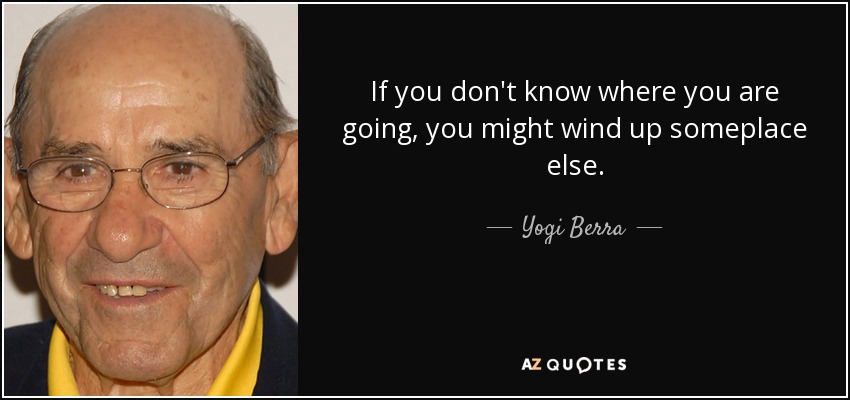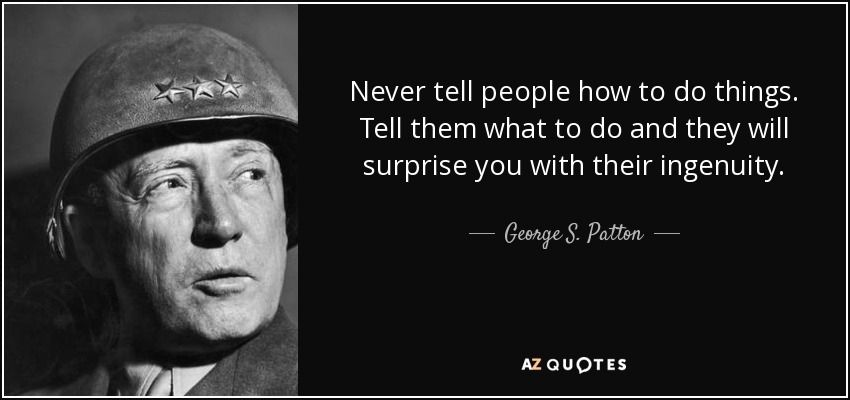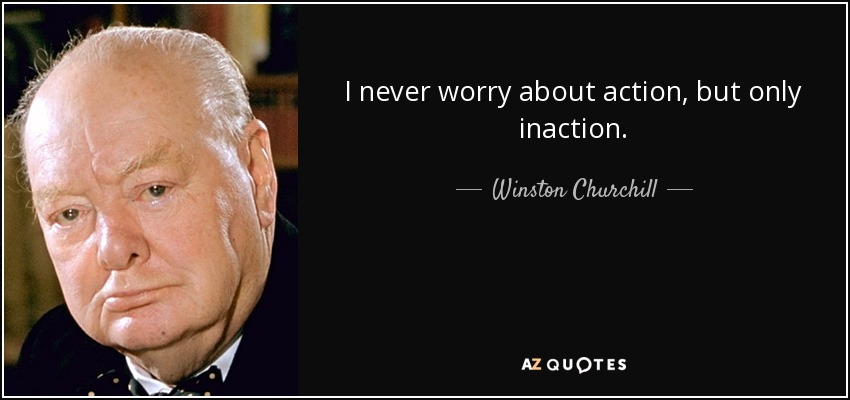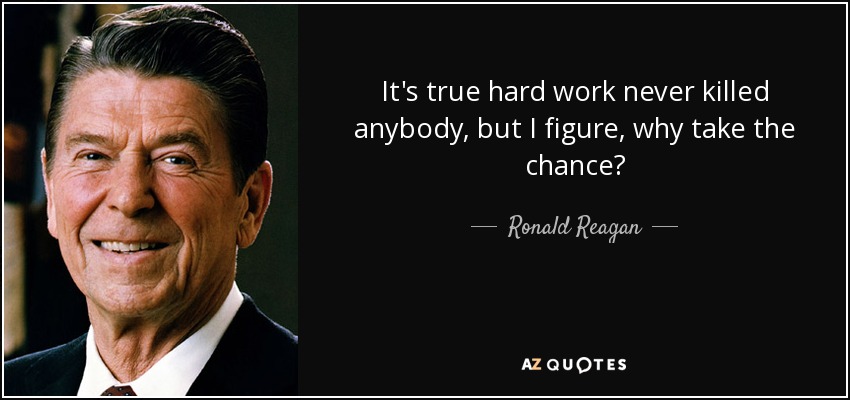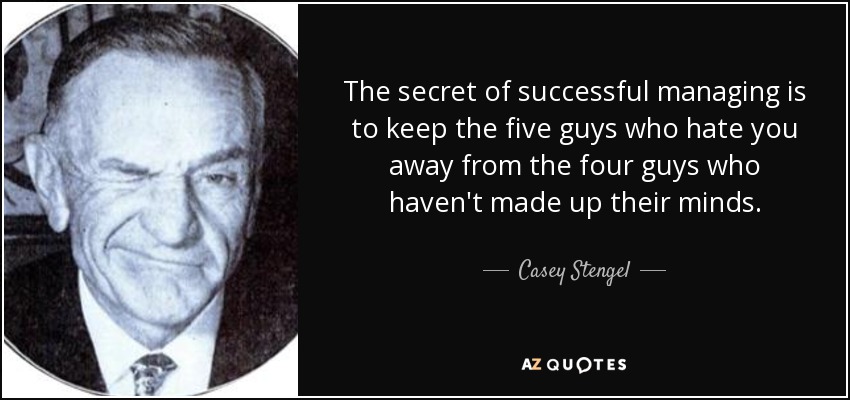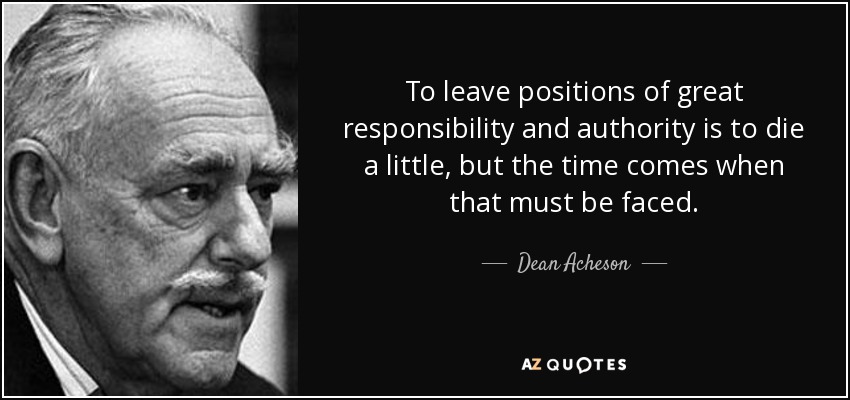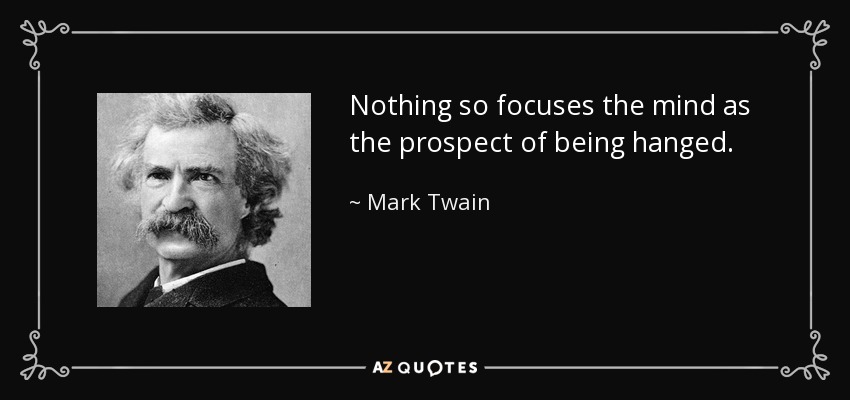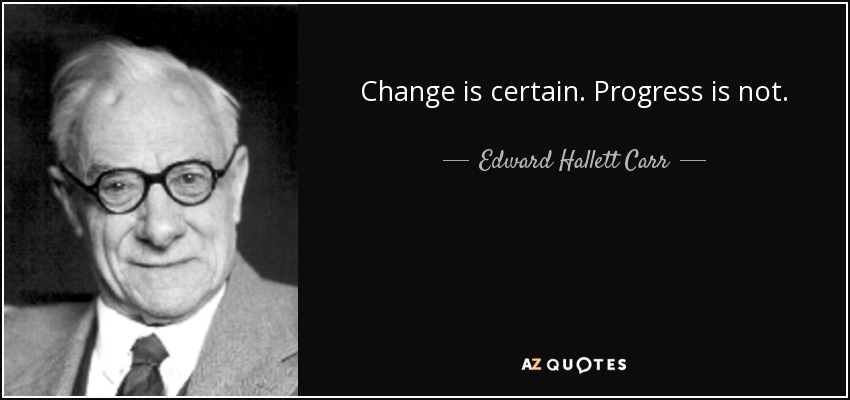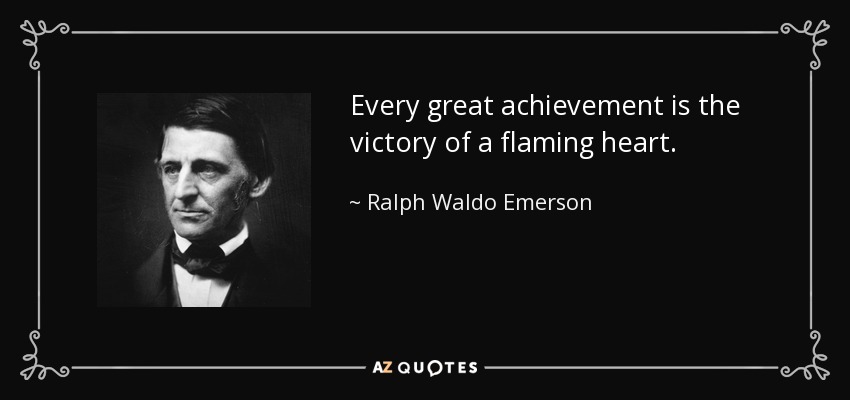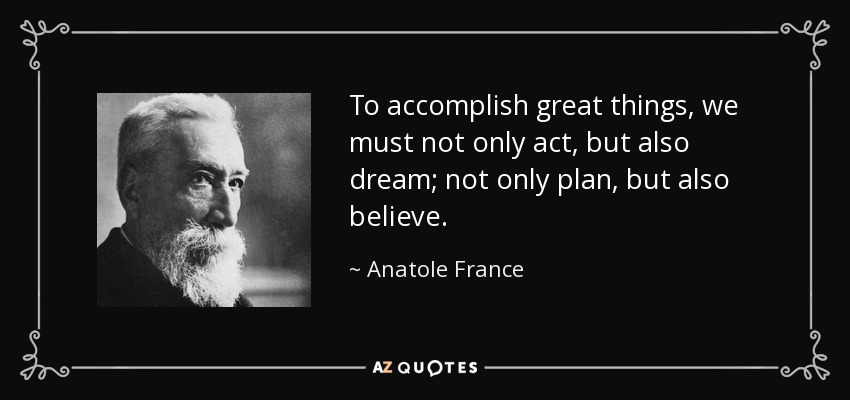Click here to return to Blog Post Intro

Why Bureaucracies So Often Fail Us
As Gates puts it, hardly a day passes in the life of any American without his or her having to confront one or another bureaucracy. Unfortunately, encounters with a bureaucracy almost always have stress and frustration as by-products.
Virtually every bureaucracy needs to reform: to modernize, get rid of paralyzing procedural and operational barnacles that have accumulated over decades, reduce waste, and become more efficient and effective. Gates found that to be the case in leading three apparently unique organizations—the CIA, Texas A&M, and the Department of Defense.
Bureaucratic reform, Gates learned, must overcome the growing demand for transparency in decision making. Imagine corporate executives having to devise strategy, internal restructuring, personnel policies, and marketing plans entirely in public.
Fundamental to bureaucratic culture is risk avoidance: It is almost always safer for the public bureaucrat—and too often the business bureaucrat as well—to say no than yes. In a public environment of exposés, recrimination, faultfinding, and investigations both by officials and by the media, not acting is usually safer than acting—especially if the action involves something new or different. Further, the proliferation of investigative bodies, inspectors general, quasi-independent evaluation entities within traditional bureaucracies, together with the steadily growing propensity among politicians over the years to look for someone to hang for every single problem or hiccup, has contributed not just to risk aversion but to inaction. This is replicated to one degree or another at every level of government.
Further, it is in the nature of bureaucracy for the boss at each level to want more people and more resources: each often measures her personal success not by customer satisfaction but by the size of her “empire.” The idea of willfully shrinking one’s empire to make the overall enterprise more successful and more efficient borders on heresy. And there is no financial incentive, personally or institutionally, to do so in a public bureaucracy.
There is, in many bureaucracies, a pervasive sense of uniqueness and, implicitly, superiority. This is best captured by the mantra at Texas A&M about being an Aggie: “If you’re on the outside looking in, you can’t understand it. If you’re on the inside looking out, you can’t explain it.”
Historian Jacques Barzun spent nearly half a century at Columbia University and the University of Cambridge wrote in his book From Dawn to Decadence, “Institutional self-reform is rare; the conscience is willing, but the culture is tough.” Business and public bureaucracies have in common many obstacles to change, but the final obstacle to reform unique to public institutions is simply the absence of any economic incentive to do so.
Gates draws on his experience leading transformational change in diverse organizations over many years and offers leaders in bureaucracies—public and private and at all levels of leadership—specific ideas and techniques that can enable them to successfully reform and improve their organizations.
Where You Want to Go: “The Vision Thing”
One bumper sticker says “I don’t know where I’m going, but I’m making good time.” Sadly, that describes too many organizations today.
To be successful agents of change—of reform—leaders not only must be able to envision a new way forward but also must be practical, with the skill to build broad support for and implement their vision.
The most critical thing a new leader at any level should do is listen. Too many new bosses arrive confident they have all the answers—the solutions to an organization’s problems. Even after a leader has established her goals and launched actions to implement them, she should keep reaching out and listening to people at every level for as long as she is in the job. By listening, she can learn whether her agenda for change is creating new opponents or allies and who they are. That, in turn, will give her the information she needs to assess whether to adjust her approach; at a minimum, at each step she will know the internal atmosphere as she moves forward.
When challenging the status quo, even after listening to everyone, the leader must sometimes be prepared to act alone, to boldly go where no one else wants to go. If a leader is not making at least a few enemies along the way, he must not be doing much.
The important thing to remember is that in any public or private sector organization, whether it has three million employees or three, having a clearly defined and achievable vision—or set of goals—and getting the priorities right in moving forward are the preconditions for successfully leading change.
Formulating a Strategy
For successful change at every kind of institution in both the private and the public sectors, a leader must win the support of those in the trenches who deliver the mission of the organization. Recognition of their critical role and respect for them go a long way. It is imperative early on for a leader to reassure (or disarm) those who will be apprehensive about his intentions—that is, probably nearly everyone in the organization.
When Gates met with his Joint Chiefs of Staff, he would go to their conference room, “the Tank.” He met there with them once a week just to hear what was on their minds, even if there was no other reason to get together. Similarly, rather than summon the ten or so major commanders from around the country and the world to brief him when he took over, he visited their headquarters; Gates went to them.
Gates believes that the respectful way he treated senior military leaders made a huge contribution to their support of what he was trying to do. When they disagreed with him, they refrained from undercutting him or running to Congress to sabotage his efforts—a common practice for many of his predecessors.
Treating the military leaders as colleagues and not subordinates, listening and using their ideas, Gates forged a strong team with them that made historic changes in American intelligence—restructuring agencies, reorienting our activities and budgets away from the Soviet Union to myriad other global problems, and changing the way we collected and analyzed information for the nation’s leaders.
Gates notes that there is another important constituency to cultivate in every organization: those low in the institutional pecking order—line workers, staff, troops, or students. The only way for a leader to persuade them he has their interests at heart is through consistent actions over a period of time. Rhetoric cuts no ice. But knowing the person at the top cares matters a lot, regardless of the kind of institution or its size.
The wise leader’s strategy for change must include a concentrated campaign to make as many friends and allies as possible as early as possible before he starts taking actions that will inevitably make enemies.
As mundane as it might seem, another important aspect of a new leader’s strategy from her first days should be to quickly seize control of her calendar. No matter the size of an organization, a boss’s time is her most precious commodity. A leader must make time to think and to plan—to strategize. Strategizing takes time, and it is a common failing of leaders of big institutions that they get so trapped in day-to-day issues, meetings, and travel, they neglect their own agenda—change. Gates always set aside an hour or so every day to work on his agenda. In the normal course of affairs, he noted how the demands of others filled up most of the day. If he wasn’t careful, routine matters would consume the entire day.
To achieve especially challenging goals, a leader should always be prepared to tailor his reform strategy to the culture of the institution. This requires investing much thought in tactical creativity—as well as unorthodox approaches and the element of surprise—in developing strategies for implementation.
Sixteen months after arriving on campus at Texas A&M, Gates implemented a tailored strategy for increasing diversity at A&M: rejecting the use of both affirmative action and legacy, and allocating millions of dollars to a unique and aggressive recruitment effort. The strategy was controversial among both external and internal audiences. But sometimes a leader must decide what is in the best long-term interest of the institution, suck it up, make a tough decision, put his head down, and plunge ahead—even if alone. Gates was convinced that if he was to meaningfully increase minority representation at A&M, he had to use an unorthodox strategy consistent with the institution’s culture. He was determined to convince Hispanics and African-Americans that he was serious about increasing their numbers in both the student body and the faculty and equally determined to persuade the university community that greater diversity was essential for Texas A&M’s stature and its future. Gates points out, “Between 2002, before I launched my initiative, and 2012, African-American and Hispanic undergraduates at Texas A&M increased from 10.6 percent of the student body to 23.6 percent, a major step forward, though there is room for continued improvement.”
One strategy new leaders often use in reform initiatives is reorganizing the bureaucracy. But all too often, they confuse organizational and name changes with real change. If a leader wants real change, he must realize the main target is how people do their work, not where. How you make people more efficient and productive, more effective, more responsive, more open-minded, better at their jobs, is little affected by the placement of their organization on the chart. There is one exception to this general proposition: getting rid of boxes on the chart—reducing layering—is almost always a good thing. Rearranging the organizational boxes, especially if it involves physical relocations, also is enormously distracting to an organization. Whether in the public or the private sector, try to leave the boxes, both actual and organizational, alone unless absolutely necessary.
Techniques for Implementing Change
Fundamental to success is inclusiveness—getting as many people involved as possible, especially among the career professionals. In every senior position he held, Gates made extensive use of task forces to develop options, recommendations, and specific plans for implementation. He relied on such ad hoc groups to effect change instead of using existing bureaucratic structures because asking the regular bureaucratic hierarchy (as opposed to individuals within it) if the organization needs to change consistently yields the same response: it almost never provides bold options or recommendations that do more than nibble at the status quo.
Leaders have to understand that a bureaucracy is incapable of reforming itself. The best way to get access to, and use, internal talent and ideas for specific steps to implement reform is to get people from different parts of the organization working together outside their normal bureaucratic environment. Task forces and similar ad hoc groups are silo busters.
Committees, task forces, councils, and review groups that cut across bureaucratic boundaries—properly used and directed—can be an exceptionally useful tool in leading change. However, committees in any organization must never be allowed to roam unleashed, undisciplined, uncontrolled, and without a specific date for extinction. Otherwise, they are a menace.
Did all these councils, task forces, and working groups slow down the implementation of change? Probably. However, as Gates told the university community at the beginning of his fifth year, “The results speak for themselves. During a period of dramatic changes at Texas A&M, a remarkably tranquil and productive partnership between faculty and senior administrators has emerged on the basis of mutual respect and open communication.” Amid a whirlwind of change, broad participation in these efforts generated a sense of purpose, stability, and esprit.
Business leaders do not use task forces and other such silo busters often enough. Such groups are immensely useful in building personal relationships across a big organization that can only be beneficial in the long run.
A leader bent on transformational reform will benefit greatly from demanding—and demonstrating—transparency and sharing of information about implementation, both internally and externally. Especially in bureaucracies, people are suspicious of change and always suspect hidden agendas.
It is an ego trip to dole out little bits of information to subordinates and career professionals, keeping them in the dark. This is the sign of either a weak, insecure leader or an arrogant know-it-all. Whichever it may be, it is fatal to successfully implementing lasting reform. Today, the ubiquity of social media and e-mail makes ridiculously easy the kind of communication between the leader and her employees that is so important. Failure of leaders to take advantage is a big mistake.
Gates regularly sent e-mails to all faculty, staff, and students about progress in implementing the many different change initiatives under way. Ironically, the more information he shared, the more people were inclined to trust him—and support what he was trying to do.
Be wary of consensus. When it comes to implementing reform, you must look very closely at any recommendation for action characterized as the consensus of a group. Does it advance your agenda? Is it as bold as you want or need? The erudite Israeli foreign minister Abba Eban insightfully observed that a consensus means that “everyone agrees to say collectively what no one believes individually.”
When Henry Kissinger was national security adviser, he would only half-jokingly comment that every policy paper had three options: Option A was essentially to do nothing; Option C was so radical as to be automatically rejected; and thus Option B, a middling and therefore very modest course of action, was the only sensible approach—the bureaucracy’s preference. In effect, it avoided the appearance of inaction or any serious opposition but accomplished little. A leader can’t allow her task forces, councils, or reviews to trap her into accepting Option B. A leader must insist upon real options. If they aren’t forthcoming, if the choice among them isn’t difficult, she must send people back to the drawing board. The bureaucracy can’t be allowed to dictate terms.
A leader implementing reform, within the confines of law and regulation, must decide how much analysis is needed before making a decision and acting. Analysis must not be an excuse for paralysis. The proliferation of investigative bodies in government, especially at the federal level, is becoming a serious impediment to managing—and changing—bureaucracies.
Deadlines for implementation are important in every initiative for change in every organization. Deadlines need to be short. A distant deadline is an invitation to lethargy and delay. A leader should set realistic but short deadlines on each initiative she undertakes. Short deadlines demonstrate a leader’s seriousness of purpose: that she is determined to implement change as soon as practicable, understands the dynamics of bureaucracies, and is using time limits as a means to counter an organization’s naturally cautious instincts and resistance to change. If Gates was limited to just one suggestion for implementing change in a bureaucracy, he would choose imposing short deadlines on virtually every endeavor, deadlines that are enforced.
In implementing reform, a leader must master the available information, make decisions, assign responsibility for action, have a regular reporting mechanism that allows her to monitor progress and performance, and hold people accountable. And then she must get out of the way. “Micro-knowledge” is necessary; micromanagement is not. Broad perspective is always important, but a leader must get into the weeds as well.
In the military and in corporate America, there is great emphasis on delegation and not being a micromanager. All things being equal, that is good advice. But subordinate managers must know the person in charge knows what she is talking about. When a leader is aware of the nitty-gritty, it doesn’t take long for people to realize they had better double-check their work and that different organizations involved in the same briefing had better cross-check with each other before marching into a meeting. Such displays of micro-knowledge also send the message that it will be very hard to bamboozle the leader. Moreover, micro-knowledge often allows a leader to better understand what she is being told, to place it in context, ask penetrating questions, and make smarter, better-informed decisions.
For a leader to get the big things right depends a great deal on knowing the little things, especially when implementing difficult and controversial change. The purpose of doing your homework—of micro-knowledge—is not to show off how much you know, for one-upmanship, or to play “gotcha,” but to be able to make better decisions. Without micro-knowledge, you are the prisoner of your bureaucracy and your staff, and they will play you like a cheap fiddle.
A leader at any level who tries to oversee the daily efforts of his subordinates is doomed to fail. Besides which, if a leader doesn’t trust his lieutenants to carry out his strategy, he has chosen the wrong people. Remember the definition of a leader is “one who guides, one who shows the way.”
A final, and critical, technique for implementing change is ensuring follow-through. Contrary to what most bureaucrats believe, a good process is not an end in itself: Outcomes are the only things that ultimately matter.
The bureaucracy needs to know its leader is personally involved in the implementation of his initiatives and monitoring their progress. Those techniques used in formulating the agenda and making decisions—transparency, inclusiveness, decisiveness, micro-knowledge (but not micromanagement), and accountability—all will continue to be essential in implementation.
Winston Churchill attached to important decision papers red tabs that read, “Action This Day.” That must be the mantra of the agent of change.
It’s Always About People
People, not systems, implement an agenda for change. People at every level in every organization need to know their work is considered important by the higher-ups. At every level, a leader should strive to make his employees proud to be where they are and doing what they do. It doesn’t matter whether you are president of the United States, CEO of a huge company, or a supervisor far down in the organization.
Part of a leader’s responsibility is to ensure that employees know how their work fits into the bigger picture, how it makes a contribution, a difference. Those at or near the top should do the following:
- Remind employees often that what they do is important to a task or organization and to successful accomplishment of a mission.
- Criticize in private and focus on a specific problem.
A leader at any level should be receptive to suggestions and ideas from her subordinates. A successful leader, and especially one leading change, treats each member of his team with respect and dignity. It seems obvious, but in far too many bureaucracies bosses at all levels fail to do so. A leader who treats his team members with respect and dignity can win the loyalty of subordinates literally for life.
Gangster Al Capone allegedly once said, “You can get a lot more done with a kind word and a gun than with a kind word alone.” Leaders can—and, when necessary, must—level tough criticism at individuals, but due regard for their dignity requires doing it in private, not adding embarrassment and humiliation to the equation.
As President Harry Truman put it, “Always be nice to all the people who can’t talk back to you. I can’t stand a man or woman who bawls out underlings to satisfy an ego.”
To lead reform successfully, a leader must empower subordinates. Then, a leader ends up with a broad cadre of senior career professionals committed to implementing the change agenda. While they are not necessarily “disciples,” they do tend to believe in what a leader is trying to do.
A self-confident leader doesn’t cast such a large shadow that no one else can grow. A successful leader—and reformer—never misses an opportunity to give credit to those working for him as a group and as individuals. He also is willing to let excellent employees move on when they are offered new opportunities or a chance to ascend the ladder.
Whether you are a corporate CEO, the secretary of defense choosing the next generation of military leaders, or a middle manager, identifying talent and growing it are two of the primary responsibilities of a leader.
Candor is critical to a leader’s success. Every boss needs to understand that creating a climate where people feel comfortable in being honest in their opinions is the cheapest possible job insurance for the person in charge. George Washington was pretty thin-skinned but recognized the importance of candor and criticism. He once wrote, “I can bear to hear of imputed or real errors. The man who wishes to stand well in the opinion of others must do this, because he is thereby enabled to correct his faults, or remove prejudices which are imbibed against him.” Would that all leaders were as insightful. No one likes to be criticized or told of his or her shortcomings or errors, yet everyone needs to hear it—and welcome it.
At home, if we’re lucky, we have spouses who keep us grounded. Gates explains, “As an National Security Council staffer in the 1970s, I’d come home and brag to my wife about attending some meeting with the president that day, and the response would usually be along the lines of ‘That’s nice, dear. Now take out the trash.’” At work, we need people who do the same. Every leader needs people around him or her who will speak their minds freely. All that said, getting candor, even when you want it—even when you make clear you welcome it—can be difficult. Interestingly, Gates explains that he found women disproportionately more willing to be candid with him. Every leader must encourage respectful, loyal dissent. Every leader must look for every possible opportunity to demonstrate that candor is welcome.
Gates observes that exhausted people make bad decisions and give bad advice. Gates frequently encountered people in the federal government and in companies who rarely took vacations. We all need to recharge our batteries and spend time with our families. And in all three jobs, Gates always returned from vacation with a yellow tablet full of ideas and initiatives for further change and reform.
Gates observed that all too often in his decades of government service when something went wrong, it was the lower-level or mid-level official who was assigned blame and had to walk the career plank while more senior officials, who should have known about the problem and acted, escaped reprimand altogether. The failure to hold people accountable for performance seems to be characteristic of virtually all bureaucracies.
“Accountability” has become synonymous with “blame.” This is too bad because accountability is an invaluable tool for leaders and is really about empowerment: setting expectations and measuring performance, the results of which can be either positive or negative.
Creating fear is not a constructive leadership tool. But if it is the consequence of simply holding people accountable for unsatisfactory performance, then so be it.
The toughest personnel decision a leader faces—in government or business—is when he realizes that someone who has given years, often decades, of faithful and competent service does not have the requisite skills to help take the organization to the next level of excellence or just does not have the right background to take on the tasks ahead. The cost of leaving such people in place is just too high. To change bureaucracies effectively, a leader must first make his people proud and eager to excel.
Stakeholders: Friends and Foes
Of all the stakeholders associated with public bureaucracies, elected oversight bodies—local school boards, city and county council members, state legislatures, Congress—are the most important. Simply put, the leader of a public organization cannot succeed without the support of its elected overseers.
A leader must never forget that legislators are elected by the same people he has been appointed to serve. They are the people’s representatives and, for that reason alone, warrant a leader’s respect and deference, however hard that sometimes is. Ronald Reagan, often considered an ideologue, was in fact quite pragmatic when it came to Congress. If he could get 60 percent or so of what he wanted, he was content to ink the deal—and then come back for the rest later.
Leaders who are called before an elected body to testify should be modest, truthful, humble, and forthright. Treat appointed oversight boards and regulators as you do legislators because they sometimes have even more direct authority to control or shape what you do.
To create goodwill (and room to maneuver), develop personal relationships, keep the regulators well-informed, be transparent and honest, and put the board members in contact with your best professionals. Listen to them.
A reform leader should view the media as important means for getting his message out to his own workforce and to the public about what he is trying to do. The media can be the best vehicle a leader has to communicate his actions, his thinking, and his intentions for change. Most senior bureaucrats see the media as a liability and a threat; Gates believes they can also be an asset, especially for a change agent. The reformer needs to take advantage of all the tools at his or her disposal.
Reform leaders should also regard unions as stakeholders who must be taken into account. If reducing the number of employees is necessary, a leader must try to make the process as humane, transparent, and painless as possible. The best approach is to treat them with respect, transparency, an open door, an open mind, and a willingness to take time to listen. Take them seriously, take their concerns seriously, and, wherever possible, try to address their issues and implement some of their suggestions. That is the way a good leader can make friends and allies.
The Agent of Change: “Mirror, Mirror on the Wall”
Gates likes humorist James Boren’s advice for successful leadership, “When in charge, ponder; when in trouble, delegate; when in doubt, mumble.”
How does a true leader conduct himself? The best leaders have their egos under control. They empower subordinates who are given the lion’s share of credit and accolades when success comes.
Egotists treat subordinates badly. They are supremely self-confident, amazingly lacking in self-awareness, incapable of introspection, and generally unpleasant to deal with. They are usually bullies. And they can be found throughout the ranks of management, not just at the top. Arrogant egotists also are people who crave power.
A leader, or those who aspire to that role, regardless of whether in the public or the private sector, must have integrity. Honor is defined as “honesty and integrity in one’s beliefs and actions,” integrity being “adherence to moral principle and character.
Herbert Asquith, British prime minister from 1908 to 1916, wrote, “To speak with the tongue of men and angels, and to spend laborious days and nights in administration, is no good if a man does not inspire trust.” A leader’s actions must match his words.
For most at or near the top of the bureaucratic heap, it is not the great crime that undermines integrity but the little things that erode it.
Self-discipline is central to the leadership of institutions and to reforming them. Gates points to a favorite saying, “Never miss a good chance to shut up.” Gates consistently points to a leader’s need to listen and to empower subordinates. To do that, they need to know when to keep quiet and when to keep their hands off the steering wheel. Silence and restraint are essential, if undervalued, tools of leadership. It is a simple truth that when you are talking, you are not learning.
A leader must be friendly, approachable, and accessible but ought not to allow too much familiarity. The folks who believe themselves to be the smartest in the room tend to condescend and subtly or not so subtly bully their interlocutors.
Historian Gordon Wood wrote of Washington, “Lacking the genius and intellectual confidence of the advisors, he consulted them often and moved slowly and cautiously to judgment; but when ready to act, he acted decisively, and in the case of controversial decisions he did not second-guess himself.”
Leaders of institutions who approach their jobs with some humility are far more likely to get from subordinates the kinds of ideas and advice critical to success and to build a solid team than those who presume to know all the answers.
When a leader is fighting bureaucratic battles for reform, she needs a few senior associates who are trustworthy, share a commitment to her agenda for reform, and are capable of effectively implementing her decisions. Upon taking her job, a leader may have the opportunity to fill vacant senior positions. She should look for capable, independent-minded people who share her goals but are willing to give candid recommendations for how to achieve them. In some ways, as important as who occupies the senior operating positions for a leader’s success is the immediate staff with which he surrounds himself. Who they are and how they conduct themselves reflect directly on him.
Gates noted that he wanted a mix of experience and new eyes and people who would be absolutely honest with him, who would tell him what he needed to hear, not just what he wanted to hear. He ran a very lean front office in all three institutions he led, especially given their size and suggests all leaders do the same. Too big an immediate staff becomes an obstacle to good communications and getting things done. A big staff also makes a boss look self-important and oblivious to cost, not good things when he is trying to lead reforms.
Leaders in all organizations—including the biggest ones—are well served by a small front office staff. It is more effective, and for a leader focused on transformational reform, it sends a powerful message.
One key aspect of successfully reforming institutions, public or private, is taking the work seriously but not yourself. A leader needs to set the example of that principle. Never underestimate the extraordinary power of humor. A leader should never underestimate the benefits of self-deprecating humor; making jokes or humorous observations about himself can be a powerful tonic to his team.
Don’t overstay your welcome. Don’t let power and position—or being spoiled by the corporate airplane—go to your head. As the old saying goes, “The cemeteries are full of indispensable men.” One of the toughest decisions in life is knowing when to dance off the stage. It is sad to see someone cling to power and position interminably.
Unlike Secretary of State Dean Acheson, Gates decided to leave so he could “live a little.”
In his short book Churchill, Paul Johnson describes what he considers the personal qualities that made Winston Churchill such a great leader: The first lesson is: always aim high. Lesson number two is: there is no substitute for hard work. Third, and in its way most important, Churchill never allowed mistakes, disaster—personal or national—accidents, illnesses, unpopularity, and criticism to get him down. Fourth, Churchill wasted an extraordinarily small amount of his time and emotional energy on the meannesses of life: recrimination, shifting the blame onto others, malice, revenge seeking, dirty tricks, spreading rumors, harboring grudges, waging vendettas. Finally, the absence of hatred left plenty of room for joy in Churchill’s life.
Money, Money, Money: Reforming in Scarce Times
A bureaucracy has infinite capacity to spend money—no matter how much it is given. The appetite is insatiable. A bureaucracy—public or private—will always have a wish list of unmet needs, ranging from the “urgent” to the “nice to have.
Periods of budget stringency are unparalleled opportunities for reform leaders to implement changes in the bureaucracy, to make structural and cultural reforms, to increase efficiency, and to reallocate resources to new priorities.
It is a fact of life that because bureaucracies are so tough to change, they don’t. And over time they get fat, sloppy, lazy, and set in their ways. Tight or reduced budgets afford the reformer an important weapon for forcing change.
Gates notes that the bureaucratic status quo was his target in all three big institutions he led. In 2010, he undertook a major budget initiative with the sole purpose of forcing the bureaucracy to reform and change, directing the military services to cut $100 billion in overhead costs over a five-year period. Cutting jobs and firing people are almost always unfortunate consequences of reduced budgets. How they are done matters.
How the leader handles such reductions will affect future morale as well as perceptions of him by those who remain in the institution. When Admiral Stansfield Turner was head of the CIA in the latter half of the 1970s, he fired hundreds of clandestine service officers. Gates explains, “As I understood the situation at the time, he wanted the letters of separation to include expressions of appreciation for service rendered to the country and their contributions to U.S. security. The agency lawyers apparently persuaded him that such niceties—courtesies—might give a fired officer some grounds for a lawsuit to get his job back, and so those let go received a terse, even callous, dismissal letter. The result was deep animosity toward Turner not just by those fired but by most of those who remained at the agency.” As long as a leader is operating within the laws and regulations pertaining to such matters, he shouldn’t let advisers deter him from—make him afraid of—treating people being let go courteously and with compassion.
As with the reform agenda itself, transparency in budget cutting is the only way to build trust in a bureaucracy. Involving as many senior personnel as possible and making the process open to them are important to their support of a leader’s subsequent decisions—and to their ability to inform and reassure their employees. The more information a leader shares, the more he can inform his people about the choices the institution faces and the options he is considering, the more he can allay some of the uncertainty that inevitably accompanies tough budget decisions.
Salami-slicing budgets—each component gets a thin cut—is a formula for broad institutional mediocrity and is the antithesis of reform and striving for excellence. It is the worst possible approach from the standpoint of accomplishing an organization’s mission and for carrying out reform. It is managerial cowardice.
When it comes to budgets, and especially cutting them, the leader must establish priorities; some activities are core to the mission of the organization, and others are not. Establishing priorities sends the message that some functions aren’t as important as others, and that too creates ill will. Even so, a leader needs the intestinal fortitude to make the cuts where they should properly be made, come what may. Waste, fraud, and abuse are favorite targets of politicians and the media and are usually lumped together as a single category of bureaucratic malfeasance. All three exist in every bureaucracy, but each is quite different from the other, and so is the remedy.
People get comfortable doing business in particular ways, and when, over time, those ways become increasingly inefficient or fail to provide quality service, they have no interest in changing the status quo. Abuse and fraud demonstrate a lack of honor and integrity and, as such, can cast the responsible individuals, an entire organization, and its leadership in an unfavorable light. Both are, at minimum, violations of a trust and cannot be tolerated.
If a leader manages carefully and ends the fiscal year without having spent every dollar he was budgeted, the powers that be will likely conclude he was given too much money and will therefore cut his allocation for the next year. On the other hand, the lousy manager who spends his entire allocation and perhaps then some will likely get a sympathetic hearing for an increase in budget next time around.
Reform: The Never-Ending Story
The reality of reforming bureaucracies is that when a leader thinks he is done, he probably is done. Transformation is an unending process, not a once-in-a-lifetime experience, and that is how a leader must think of it.
After a period of reform and change, too many organizations in the private sector and nearly all in the public sector fall prey to that putative law of physics: they tend to get comfortable with the new status quo and defend it as passionately as they did the old way of doing things.
The leader of an organization is the engine of change and reform, and his work is never done. If his yellow tablet keeps filling up with ideas, he should keep on truckin’. But if a leader cannot sustain his enthusiasm, energy, and creativity to keep making his institution better, he needs to step aside for someone who can.
Good leaders must keep coming up with new perspectives, new ideas, and new improvements. To do so, leaders must keep listening, remain open-minded toward new ideas from others, and always be on the hunt for better ways to get the job done.
The first and continuing responsibility of the leader is to understand the implications of a changing environment for his organization, to anticipate new needs, and to keep developing fresh strategies. The leader’s second important responsibility is to look for ways to continuously make the organization more user-friendly, more efficient, and more cost-effective. Leaders should ask those on the front lines, those who interact with the public or other customers, to identify obstacles to getting their jobs done better and more efficiently.
Managers at all levels should regularly sit down with their folks and talk about ways to do the work more efficiently and better serve the public—the customer.
The leader needs to keep a cold, hard eye on his initiatives and be honest enough with himself—or open to the views of colleagues—to admit something isn’t working and then pull the plug fast.
If you are the leader of an organization, public or private sector, with a strong culture and traditions (that would include, by the way, most universities and colleges), you need to identify those elements of the culture that you must embrace, support, and try to strengthen and those that must be changed to enable future success. If you are seen as a champion for the core elements of the culture, you will encounter less resistance to changing less central aspects.
The agent of change in bureaucracies should regard reform—institutional transformation—as a marathon, not a sprint. Gates explains, “At one point, I thought that the period of rapid change at both the CIA and Texas A&M might require a subsequent period of consolidation for people to integrate and assimilate all the changes. Now I believe a rest period—a moratorium on change—is an invitation to relax and fall back into old, bad habits. In contrast, those working for successful businesses are under constant pressure from competitors, the marketplace, and investors to continuously change and innovate; if they slow down or relax, they will no longer be successful. They cannot get tired or rest.”
A Flaming Heart
The dictionary defines a manager as a “person charged with control or direction of an institution or business…one who handles, directs, governs or controls in action or use.” The best definition of a “leader” is “one who guides, one who shows the way.”
Dwight D. Eisenhower wrote to his son in 1943, “The one quality that can be developed by studious reflection and practice is the leadership of men….The idea is to get people working together…because they instinctively want to do it for you….Essentially, you must be devoted to duty, sincere, fair and cheerful.”
A core to leadership is the ability to relate to people—to empathize, understand, inspire, and motivate.
Just as government is paralyzed by self-serving, power-hungry politicians, private sector executives are seen as equally self-serving, greedy, and believing themselves entitled to be held to a different standard of behavior from ordinary folks.
A leader’s heart must be on fire with belief in what she seeks to do. Changing institutions is a battle, and she must undertake it with courage, strength, and conviction.
President George H. W. Bush reminded us that “public service is a noble calling.”
Gates concludes, “To those who believe our institutions can be better than they are, I say, Dream. Believe. Plan. Act.”


